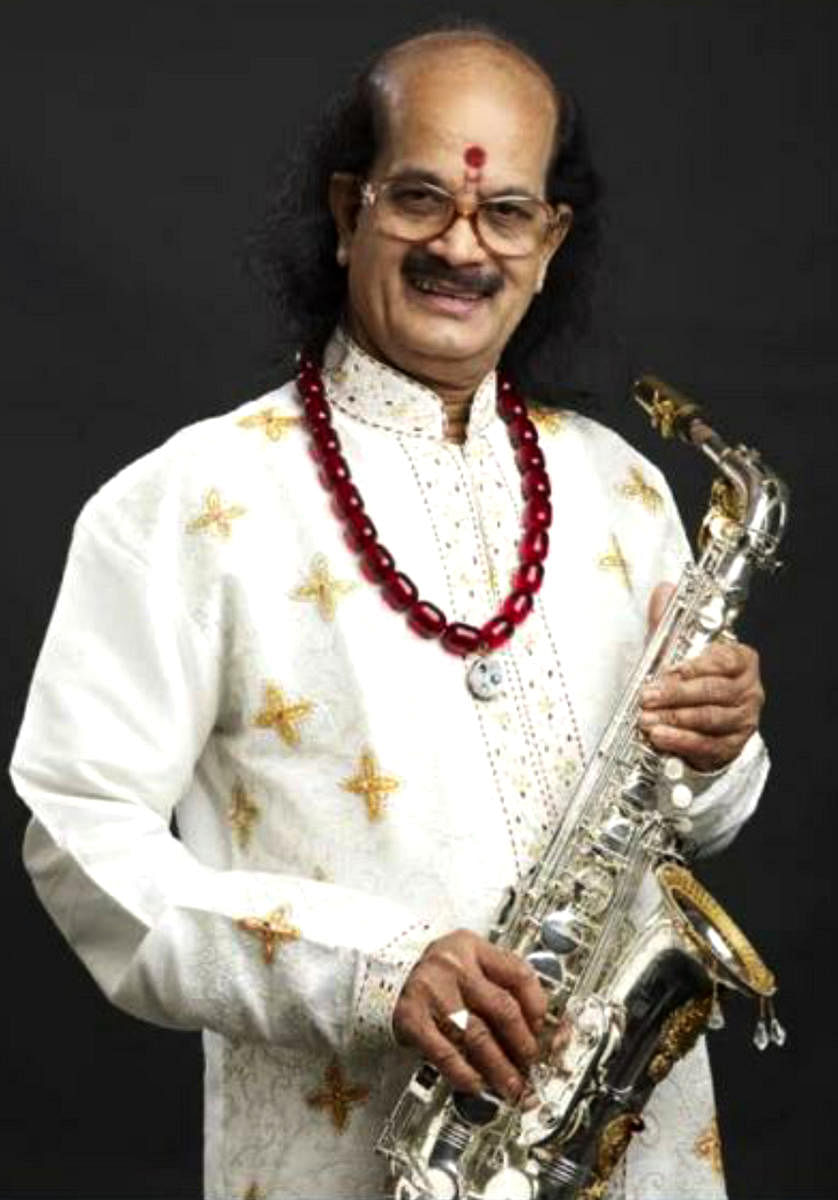The saxophone is famous for its gruff, growling expression, and Kadri Gopalnath was among the pioneers who tamed it to play the delicate graces of Carnatic classical music.
Kadri (69), who died on Thursday in Mangaluru, came to the Western instrument through the traditional Indian pipe, the nadaswaram, which he had learnt from his father Taniyappa.
For the young Kadri, the choice marked a shift from the booming, nasal beauty of the nadaswaram to the bright flamboyance of the saxophone. But the tone was all that changed.
Kadri did not switch to any Western genre; in fact, he continued to play traditional south Indian music on an instrument he had picked up after first hearing it at the Mysore palace.
Called a mangala vadya, the nadaswaram is played in the southern states to mark auspicious occasions such as weddings and temple festivals. Thanks to Kadri and some of his illustrious predecessors, the saxophone is now part of the mangala vadya ensemble in these parts. Over the last few decades, it has made inroads into southern classical culture. The saxophone is now heard solo or alongside the nadasawaram in temples and at weddings.
That achievement is remarkable in a country hooked to film music, and familiar with the saxophone mostly as a sound in romantic songs (Anisutide yaako indu, Roop tera mastana) and sensuous numbers (Mehbooba, mehbooba).
Yet, Kadri’s most popular non-film album, Raag Rang, belongs in the genre of what is loosely called fusion music.
He collaborated with flautist Pravin Godkhindi for the 2009 production, and no one, including Pujar, the proprietor of Sagar Music who conceptualised it, had a clue it would be such a wild hit.
It was the era of CDs, and the main piece, based on raga Malkauns, was inspired by two songs in the 1959 Hindi film Navrang (Tu chupi hain kahan and Aadha hain chandrama).
While Pravin played the raga with a northern lilt, Kadri’s phrasing and improvisations represented a corresponding southern raga, Hindola.
The album featured talented Bengaluru musicians, such as Sangeeta Katti, Anoor Ananthakrishna Sharma, Praveen Rao and Arun, and was played at restaurants across India and abroad, and even on Air India flights.
With Raag Rang, Kadri became India’s answer to Kenny G, the best-selling American saxophonist heard across the world (critics say he only makes “elevator music”). At the peak of Kadri’s career, some wished he would collaborate with Kenny G. A catchy album title was at hand: Kenny G meets Kadri G!
That was not to be, but Kadri did get to collaborate with a New York-based jazz saxophonist with Indian roots, Rudresh Mahanthappa. Kadri also took part in jazz festivals abroad, but he was happiest in his south Indian space, playing Thyagaraja concert standards and devotional music.
Kadri’s brush with the world of cinema is also well-known. He played for the Tamil film Duet, directed by K Balachandar. He is on record as saying he played many ragas for A R Rahman, who scored the music, before he settled on Kalyana Vasanta (known in classical music through Thyagaraja’s Nadaloludai and Purandara Dasa’s Innu daya baarade). Kadri’s longish passage for the title cards, overdubbed with a cinematic chorus and drums, made him a bit of a rockstar, getting him mobbed on his tours.
That passage also showcases his strength. The pace of his music is brisk rather than contemplative. He pulls off complex gamakas (graces) with ease, and the style amazes musicians used to a more Western expression on the instrument.
Invented by Belgian musician Adolph Sax in the 1840s, the saxophone is no longer seen as a foreign instrument in the conservative world of Carnatic music. The instrument has been around in film music, with contributions from such stylish players as Manohari Singh in Mumbai and Raja in Chennai. But when it comes to Carnatic music, what U Srinivas is to the mandolin, perhaps Kadri is to the saxophone.
